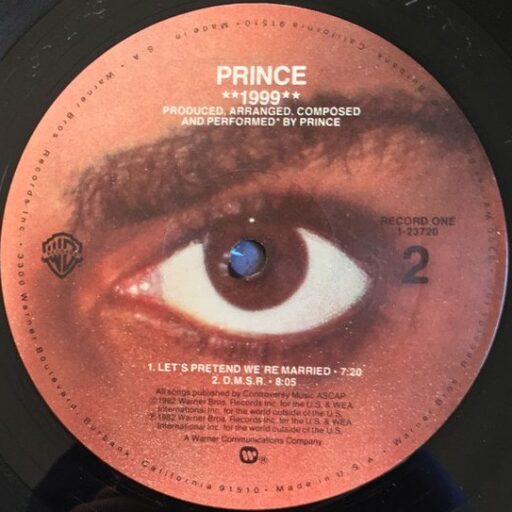We’ve already mentioned in passing how Prince’s celebrated musical heterogeneity–that genre- and race-agnostic blend of funk, soul, rock, and pop influences that would come to be known as the “Minneapolis Sound”–was at least in part a product of unique historical and geographic circumstances. It may be hard to believe today, when radio playlists are as standardized as they are irrelevant, but broadcasting in the pre-Clear Channel era was a highly localized industry. This not only made it possible for your proverbial Alan Freeds and Wolfman Jacks to wield an influence as tastemakers in their respective territories, but it also created a highly segregated musical landscape based on the perceived demands of regional audiences–which, let’s face it, often translated to the racist preconceptions of the advertising industry. In the business parlance of the times, an area populated primarily with White listeners was known as a “vanilla market.” And, with a mere 1.7 percent African American population as of the 1970 census, the Twin Cities were about as “vanilla” a market as they came.
What this meant, essentially, was a paucity of the kind of urban Black radio on which most of Prince’s peers from the rest of the country were raised: as biographer Dave Hill put it, “the people who controlled the airwaves of Minneapolis and St. Paul virtually declared that blacks did not exist” (Hill 18). The one station in the area that regularly played music by African American artists, KUXL, only broadcast from sunrise to sundown–keeping in mind that in the dead of winter, that could mean as early as 5:30 p.m.–and even then, it was predominantly a gospel station. Prince thus grew up on a musical diet that was a lot closer to what one might imagine for a White artist of his generation, tuning in after hours to the “progressive” FM rock station KQRS. “KQ after midnight, that was the bomb station,” he recalled to Minnesota Monthly in 1997. “That’s where I discovered Carlos Santana, Maria Muldaur, and Joni Mitchell” (Keller 1997). And if that sounds like an odd list of favorites for a Black teenager in the mid-’70s, their influence is clearly borne out in Prince’s music.
KQ after midnight, that was the bomb station… That’s where I discovered Carlos Santana, Maria Muldaur, and Joni Mitchell.
(The Artist Formerly Known as) Prince
“Nightingale,” another track recorded in the Anderson basement in early-to-mid 1976, is perhaps the clearest early evidence of the “soft rock” influence on Prince’s songcraft. It’s certainly the least identifiably “Black” of any of the songs we’ve discussed so far: the acoustic guitar progression is pure folk-pop, without the pronounced funk and blues elements found in “Rock Me, Lover” and “Don’t You Wanna Ride?”, respectively–though Prince’s falsetto vocal embellishments retain an unmistakable soulfulness, once again calling to mind Chaka Khan’s influence. It’s probably just the folkie arrangement and bird-related title, but I’m also reminded a bit of the Beatles’ Paul McCartney-penned 1968 song “Blackbird“; but while “Blackbird” was a (somewhat strained) metaphor for the African American Civil Rights movement, “Nightingale” seems to be literally just about a bird.

The lyrics are evocative, if again a little on the juvenile side: Prince’s character sings directly to the titular nightingale, whose voice he hears “calling out [his] name” in the night. More than anything, the song channels an ineffable loneliness; it’s easy to picture a 17-year-old Prince Nelson lying alone on his bed in the basement, listening to the birds sing and plucking out a delicate accompaniment on his guitar. The second verse, in particular, suggests that the speaker feels a closer kinship to his songbird friend than to other people: “Nightingale, though you are different than me / I feel the same / Blues come with the rain.” Finally, on the soaring bridge, he makes his feelings of isolation explicit, comparing the walls of his room to “prison walls” and avowing that the bird’s beautiful song “overcomes the pain.”
So yes, a little juvenile–it reads for all the world like the kind of Keatsian poem that would have gotten Prince an “A+” in ninth-grade English class–but poignant nonetheless. As he and his songwriting both matured, Prince would of course do much more impressive things with the soft rock influences he discovered on KQRS. But “Nightingale” shows that, at the very least, he was a quick and promising study.
(Thanks to Debbie in the comments for the John Keats suggestion, which makes me look way smarter and better-read than my original choice of Emily Dickinson. And it only took me eight months to make the update!)

Leave a Reply